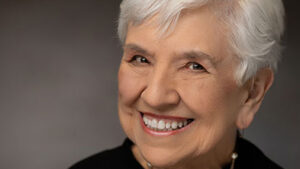A few articles ago I shared with you what I believe was a truly important historical event. It was that I, a Lutheran pastor, was invited to come to St. Philip Benizi Roman Catholic church and preach in a Unity Service upon the occasion of the 500th Anniversary of Martin Luther nailing The 95 Theses to the church door in Wittenberg, Germany on Oct. 31, 1517.
That event 500 years ago began the Protestant Reformation, which gave rise to Lutherans and other Protestants breaking away from the Roman Catholic Church over theology and Biblical interpretation, particularly over the Doctrine of Justification — how a sinner is made right before God. The powerful Catholic Church maintained the necessity of the sinner doing things to appease God, and Martin Luther was of the conviction that Scripture made it clear that it was God who did what was necessary in sending His Son Jesus to die on the cross to pay the full price for all sin. Then the sinner simply must hold on to that Good News by faith.
For nearly four years after the 95 Theses were nailed on the door and then printed by Gutenberg for wide dissemination, Martin Luther remained a Catholic priest and teacher. Debates, trials, and many additional written documents filled those four years, but on Jan. 3, 1521, Martin Luther was officially excommunicated from the Roman Catholic Church. He still believed that he was proposing the true Catholic Faith, but the split was made and the rest is history.
In the past 500 years, Roman Catholics have come closer to agreeing with Luther, but differences still exist, obviously, as we have two distinct church bodies.
As I wrote before, I was quite surprised that the good people at St. Philip Benizi reached out to me to come and preach in a combined Unity Service “to celebrate the 95 Theses.” As I prepared that sermon, I knew I wanted to meet their hospitality with hospitality and humility, but I also knew that I was bound to my Call as a Lutheran pastor to “teach and preach according to our Lutheran interpretation of Holy Scriptures.”
So here is what I did. I proposed that my “teaching and preaching” that night at St. Philip Benizi would reflect what Martin Luther would have preached and taught as “a good Catholic” on Jan. 2, 1521, the day before he was excommunicated. Therefore, putting the Catholic Martin Luther in the pulpit of a Catholic Church.
Here is what I believe Martin Luther would have preached as a “good Catholic” that day. He would have formed his sermon as a three-legged stool, each leg equally important for the stool to stand.
The first leg of Luther’s conviction was that it is “Scripture Alone — Sola Scriptura” that can inform and guide us in what we believe, teach, and confess. (Confess here means “state our conviction of faith.”) The Church has many forces and influences which come to bear on life and practice. The Church has human influences and traditions which help form much of what we do in living out our faith. The practices of worship, the kind of music, how and where we give service in the world, and many other variables of the faith can all be influenced by human understanding and honored traditions.
But, according to Luther, the only source for the formation of our “doctrines,” our absolute non-negotiable teachings about God and His relationship with us His prized human creations — the only source for these is Holy Scripture, The Bible. Luther would insist on the ultimate authority of Scripture over “popes, councils, and traditions.”
The second leg of Luther’s conviction was that it is “Grace Alone – Sola Gratia” that saves us from our sin and makes us right with God (“justified”). Grace is God’s unconditional and undeserved love He has for us, shown most specifically in sending His Son Jesus to be “The Lamb of God who takes away the sin of the world.” According to Scripture, Luther was convinced that we are saved by grace, by gift, by what God did for us, not by anything we could ever do for ourselves.
The key Scripture verse for Luther was “For by grace you have been saved through faith; and this is not your own doing, it is the gift of God — not because of works, lest any man should boast.” Ephesians 2:8-9
The third leg of Luther’s conviction was that it is “Faith Alone – Sola Fide” that connects us to God’s grace, salvation, and justification. This is also made clear by Ephesians 2:8-9. And another Bible verse which was so influential is Romans 1:17. “The righteous shall live by faith.” It is holding on to God’s grace by faith that leads to righteousness, to be right with God. It is not by any works we could accomplish or achieve; not anything we could do or buy.
And so, Martin Luther, the good Catholic on Jan. 2, 1521 would have wanted us all to share in this Good News, God’s marvelous way of Christian life. Amen.
Find Kollmeyer at www.princeofpeacefayette.org. Sunday Services: Contemporary 9:15, Traditional 11:15. “Give us a try.”











Leave a Comment
You must be logged in to post a comment.